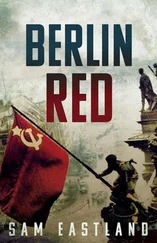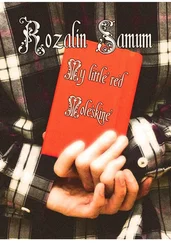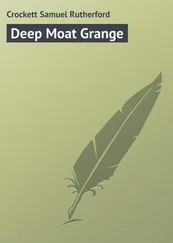Sam Eastland - Red Moth
Здесь есть возможность читать онлайн «Sam Eastland - Red Moth» весь текст электронной книги совершенно бесплатно (целиком полную версию без сокращений). В некоторых случаях можно слушать аудио, скачать через торрент в формате fb2 и присутствует краткое содержание. Жанр: Исторический детектив, на английском языке. Описание произведения, (предисловие) а так же отзывы посетителей доступны на портале библиотеки ЛибКат.
- Название:Red Moth
- Автор:
- Жанр:
- Год:неизвестен
- ISBN:нет данных
- Рейтинг книги:3 / 5. Голосов: 1
-
Избранное:Добавить в избранное
- Отзывы:
-
Ваша оценка:
- 60
- 1
- 2
- 3
- 4
- 5
Red Moth: краткое содержание, описание и аннотация
Предлагаем к чтению аннотацию, описание, краткое содержание или предисловие (зависит от того, что написал сам автор книги «Red Moth»). Если вы не нашли необходимую информацию о книге — напишите в комментариях, мы постараемся отыскать её.
Red Moth — читать онлайн бесплатно полную книгу (весь текст) целиком
Ниже представлен текст книги, разбитый по страницам. Система сохранения места последней прочитанной страницы, позволяет с удобством читать онлайн бесплатно книгу «Red Moth», без необходимости каждый раз заново искать на чём Вы остановились. Поставьте закладку, и сможете в любой момент перейти на страницу, на которой закончили чтение.
Интервал:
Закладка:
‘And if an X-ray turns up nothing,’ said Kirov, ‘we will be right back where we started.’
‘There is someone else you could take this to,’ suggested Semykin.
‘And who is that?’ asked Pekkala.
‘Her name is Churikova. Polina Churikova. Until the war broke out, she was a student at the Moscow State Institute of Art. She spent the summer of 1940 as my assistant. Her speciality was forensics.’
‘But specialising in forensics makes her a student of crime, not of art,’ said Pekkala.
‘Actually,’ Semykin told him, ‘it made her a student of both. The business of art forgery is extremely lucrative. It is also more widespread than most people can imagine. It’s possible, for example, that up to a third of the paintings in the world’s great art museums could be fakes. By making a chemical analysis of a painting, using microscopic portions of the paint, the wood, the canvas and so on, those trained in forensics can determine whether an art work is authentic. But Polina Churikova was not only my student. She was also my friend. She was the only person who came to visit me before I began serving my sentence here at Lubyanka.’
‘When was that?’
‘Only a few weeks ago.’
‘And do you know where we can find her now?’
Semykin shrugged. ‘Ask the Red Army. When Churikova came to see me, she was in uniform, like everybody else. At the time, she said she was stationed in Moscow, but where she might be now is anybody’s guess. She told me she had joined the Army Signals Branch in late June, right after the Germans attacked, and subsequently became a cryptographer. Apparently, she has already made a name for herself by breaking something called the Ferdinand Cipher, which the Fascists were using to communicate between Berlin and their front-line headquarters.’
‘How does someone who studies forensics end up as a cryptographer?’ asked Kirov.
‘The two fields are quite similar,’ explained Semykin. ‘Forensics taught her to uncover things that lay hidden in works of art in order to determine whether they were originals or fakes. The forger will always leave traces, sometimes by accident, sometimes on purpose. Now, instead of paintings or sculptures, she finds what has been hidden in the labyrinth of words and numbers.’
‘What makes you think she can help us?’ asked Kirov.
‘I make no guarantee that she can, only that when two people look at a work of art, they rarely see the same thing. That is what makes it art.’
‘This is all very well,’ grumbled Kirov, ‘except her location is as much of a mystery as this painting!’
‘Solve one,’ Semykin told him, ‘and you may solve the other. For that, you must rely on your own art, Comrade Commissar.’
‘Thank you‚ Semykin‚’ said Pekkala‚ as he handed over the first paper-wrapped package. ‘We appreciate your assistance.’
Then he and Kirov waited while Semykin carefully untied the string. After folding back the layers of archival tissue, he gasped, as the face of the fiery-eyed saviour came into view. ‘Now this. .’ murmured Semykin, ‘ this is authentic.’ As carefully as if it was a newborn infant, Semykin lifted the icon from its cradle of brown paper. Touching only the outermost edges of the frame, he held it up and sighed with admiration. ‘Is it Balkan?’
‘So I’m told,’ said Pekkala.
‘Late thirteenth century? Early fourteenth?’
‘Somewhere around there.’
‘Tempera on wood. Notice the asymmetrical nose and mouth, the deep furrows on his brow and the way this white lead backing brings to life the greenish ochre of his skin. The tension! The expressivity!’ Suddenly a look of consternation swept across Semykin’s face. ‘Wait,’ he said slowly. ‘I’ve seen this before somewhere.’ Sharply, he raised his head and stared questioningly at Pekkala. ‘Haven’t I?’
‘Yes,’ admitted Pekkala. ‘You have seen it hanging on the wall of the Museum of the Kremlin, and you will find it there again when you get out of here, Valery.’
Semykin’s eyes bulged. ‘You took this from the Kremlin Museum?’
‘Borrowed it,’ Pekkala corrected him.
‘Then see that it finds its way home,’ said Semykin as he carefully rewrapped the icon, ‘before Fabian Golyakovsky has a heart attack.’
‘It may be too late for that,’ muttered Kirov.
‘I may have lost faith in the country that owns this work of art,’ Semykin told them, ‘but the art itself is sacred, and will remain so, long after you and I and the butchers of Lubyanka have turned to dust.’
As they walked across the courtyard
As they walked across the courtyard to their car, a van arrived at the Lubyanka. These vehicles, which shuttled inmates to and from the prison, were camouflaged to look like delivery trucks. Painted on their sides were advertisements for non-existent bakeries, cigarette companies and distillers of vodka. Inside, in spaces barely big enough to hold a human being, the inmates were packed in side by side, bent double, shackled by the wrists to bars fixed at floor level against the walls of the truck so that the prisoners had to ride with their heads forced over to the level of their knees.
Only the most oblivious of Muscovites believed that these vans actually contained what their cheerful logos promised. By seeking to hide their real cargoes as they careened through the streets of Moscow, the illusion they created became even more sinister than the truth.
‘Are you all right, Inspector?’ asked Kirov, as they climbed into the car.
‘What do you mean?’ asked Pekkala.
‘You don’t look well. You’re sweating.’
With a swipe of his palm, Pekkala smeared the moisture from his forehead. ‘I can’t stand it in there.’
‘Is there any way to get Semykin released, Inspector?’
‘Probably, but as miserable as Semykin might be inside that cell, he is still safer there than out walking the streets of this city.’
‘I don’t understand.’
‘As you yourself mentioned, Semykin has a talent for choosing his enemies. Bakhturin is one of the worst. Our visit to Semykin will not have gone unnoticed by the commissar. As soon as word gets out to him, you can be sure Bakhturin will pay us a visit. And as for Semykin, he wouldn’t last a week outside that prison cell, as long as Bakhturin is watching. And if we successfully petitioned for Semykin’s release, how long do you think it would take for Bakhturin to conjure up another reason to have him arrested?’
‘I did not think of that,’ whispered Kirov.
‘And here is something else you did not think about,’ continued Pekkala. ‘Bakhturin would see to it that Semykin did not go back to prison. At best, he would find himself on a train bound for the east. At worst, the Lubyanka guards would drag him down into the basement, and you and I both know what happens there. There are worse things than sitting in prison. Five years might seem like a very long time to Semykin, but it is one of the shortest sentences given out to convicts at the Lubyanka. You know as well as I do that there are men who’ve been behind those walls for ten or fifteen years or even longer.’
A long silence followed, in which each man retreated into his thoughts.
For Pekkala, the sight of Semykin, soaked in his own blood inside that windowless cell, had brought back memories whose vividness had failed to dull with time. Nor could he find a way to frame within the scaffolding of words what his own time in prison had done to him. The truth was that he did not know the answer. Although he could remember every detail of his life in the service of the Tsar, in those memories he no longer recognised himself. It was like looking at the anonymous photographs he saw heaped upon tables in the Sukharevka market, along with the chipped plates and mismatched cutlery which were all that remained of those who had been swept away by the Revolution.
Читать дальшеИнтервал:
Закладка:
Похожие книги на «Red Moth»
Представляем Вашему вниманию похожие книги на «Red Moth» списком для выбора. Мы отобрали схожую по названию и смыслу литературу в надежде предоставить читателям больше вариантов отыскать новые, интересные, ещё непрочитанные произведения.
Обсуждение, отзывы о книге «Red Moth» и просто собственные мнения читателей. Оставьте ваши комментарии, напишите, что Вы думаете о произведении, его смысле или главных героях. Укажите что конкретно понравилось, а что нет, и почему Вы так считаете.











